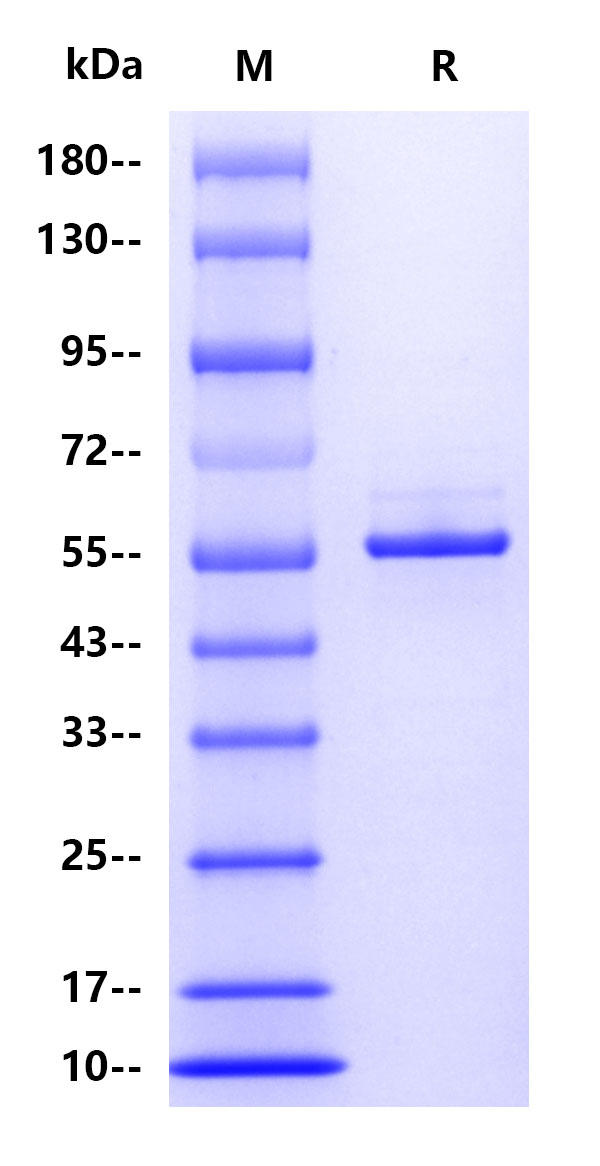Protein sequence(Q16658, Met1-Tyr493, with C-10*His)
MTANGTAEAVQIQFGLINCGNKYLTAEAFGFKVNASASSLKKKQIWTLEQPPDEAGSAAVCLRSHLGRYLAADKDGNVTCEREVPGPDCRFLIVAHDDGRWSLQSEAHRRYFGGTEDRLSCFAQTVSPAEKWSVHIAMHPQVNIYSVTRKRYAHLSARPADEIAVDRDVPWGVDSLITLAFQDQRYSVQTADHRFLRHDGRLVARPEPATGYTLEFRSGKVAFRDCEGRYLAPSGPSGTLKAGKATKVGKDELFALEQSCAQVVLQAANERNVSTRQGMDLSANQDEETDQETFQLEIDRDTKKCAFRTHTGKYWTLTATGGVQSTASSKNASCYFDIEWRDRRITLRASNGKFVTSKKNGQLAASVETAGDSELFLMKLINRPIIVFRGEHGFIGCRKVTGTLDANRSSYDVFQLEFNDGAYNIKDSTGKYWTVGSDSAVTSSGDTPVDFFFEFCDYNKVAIKVGGRYLKGDHAGVLKASAETVDPASLWEYGGGGSHHHHHHHHHH
>95% by SDS-PAGE
· 12 months from date of receipt, -20 to -70 °C as supplied.
· 6 months, -20 to -70 °C under sterile conditions after reconstitution.
· 1 week, 2 to 8 °C under sterile conditions after reconstitution.
· Please avoid repeated freeze-thaw cycles.
Fascin is a 54-58 kilodalton monomeric actin filament bundling protein originally isolated from sea urchin egg but also found in Drosophila and vertebrates, including humans. Fascin (from the Latin for bundle) is spaced at 11 nanometre intervals along the filament. The bundles in cross section are seen to be hexagonally packed, and the longitudinal spacing is compatible with a model where fascin cross-links at alternating 4 and 5 actins. It is calcium insensitive and monomeric. Abnormal fascin expression or function has been implicated in breast cancer, colon cancer, esophageal squamous cell carcinoma, gallbladder cancer, pancreatic cancer, and prostate cancer. It is also helpful in identifying Hodgkin cells.
